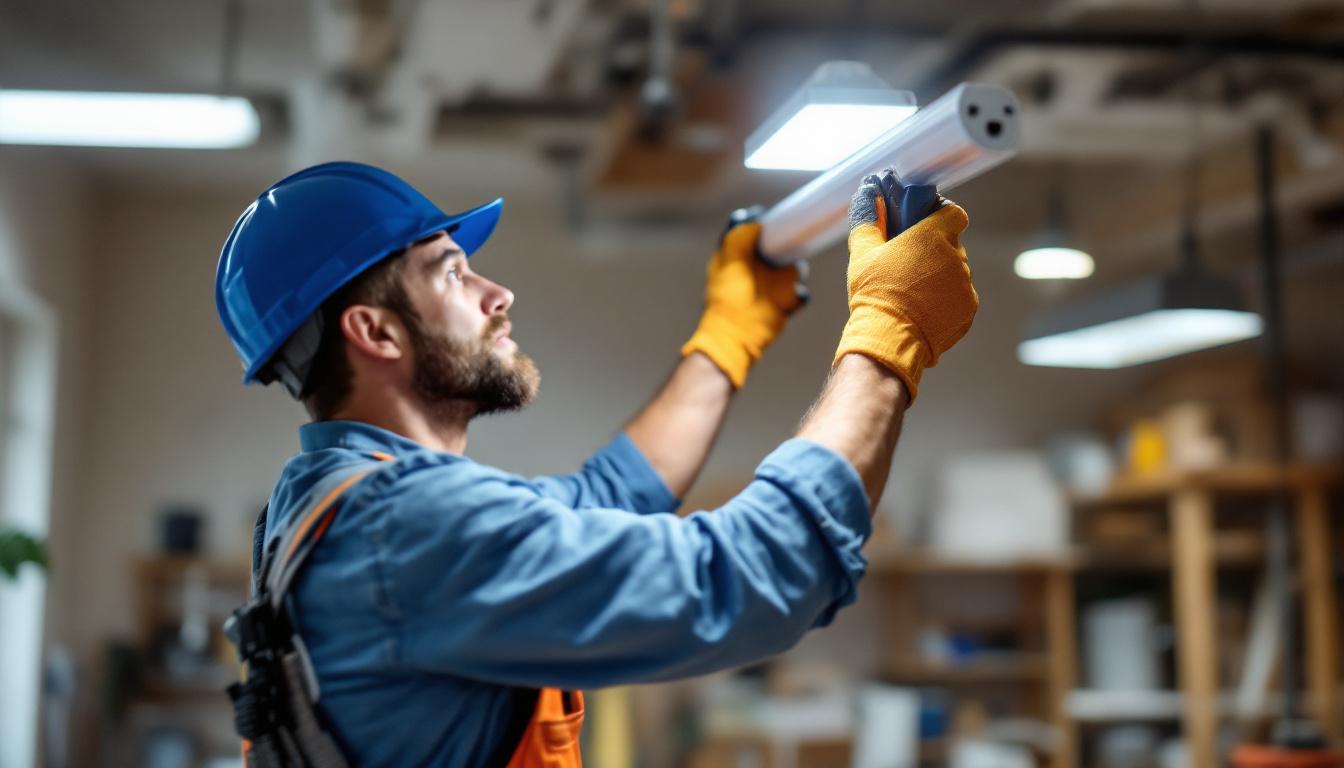
For lighting contractors, ensuring that every project runs smoothly and meets client expectations is essential. A well-organized checklist can be a game-changer, providing a systematic approach to managing tasks and responsibilities. This article outlines a comprehensive checklist tailored specifically for lighting contractors, focusing on the vital aspects of planning, installation, and post-installation processes.
Before any physical work begins, thorough planning is crucial. This phase sets the foundation for a successful lighting project, ensuring that all elements are considered and addressed.
Engaging with the client to understand their vision is the first step. This involves discussing their preferences, budget, and any specific requirements they may have. It’s important to take detailed notes during this conversation, as these insights will guide the entire project.
During the consultation, ask open-ended questions to encourage clients to express their ideas fully. Consider discussing lighting styles, color temperatures, and the overall ambiance they wish to achieve. This dialogue not only helps in crafting a tailored solution but also builds rapport with the client. Additionally, it may be beneficial to share examples of previous projects or mood boards that align with the client’s vision. This can spark inspiration and help clarify their preferences, making it easier to align your design with their expectations.
A comprehensive site assessment is vital for identifying potential challenges and opportunities. Inspect the space to evaluate existing electrical systems, structural elements, and any limitations that may affect the installation. Take measurements and note the locations of windows, doors, and other architectural features that could influence lighting placement.
Additionally, consider the purpose of the space. Different areas require different lighting solutions; for instance, a workspace may need brighter, more focused lighting, while a living area may benefit from softer, ambient lighting. Document your findings to refer back to during the installation phase. It’s also wise to assess the natural light available in the space at different times of the day, as this can greatly influence the effectiveness of your lighting design. Understanding how the space interacts with natural light can help in selecting fixtures that complement and enhance the overall environment.
Once you have gathered all necessary information, it’s time to create a lighting design plan. This plan should include detailed diagrams showing the placement of fixtures, types of lighting, and wiring routes. Utilize design software if available, as this can help visualize the project for both you and the client.
Incorporate energy efficiency into your design. Consider using LED fixtures or smart lighting solutions that can reduce energy consumption and offer greater control to the user. Present the design to the client for approval, ensuring that they are satisfied with the proposed solution before moving forward. Furthermore, think about the integration of smart home technology, which can allow clients to control their lighting through mobile apps or voice commands. This not only enhances convenience but also adds a modern touch to the lighting setup, making it more appealing to tech-savvy clients. Be prepared to discuss the long-term benefits of such systems, including potential savings on energy bills and increased property value.
With planning complete, the next step is the actual installation. This phase requires careful execution to ensure safety and quality.
Before beginning the installation, ensure that all necessary tools and equipment are on-site. A checklist of essential items may include wire strippers, screwdrivers, drills, and safety gear. Having everything ready will minimize delays and keep the workflow efficient.
Consider investing in high-quality tools that enhance precision and safety. For example, using a laser level can ensure that fixtures are installed straight, while a voltage tester can help avoid electrical hazards. Proper tools not only improve the quality of work but also enhance safety on the job site. Additionally, having a well-organized toolbox can save time; tools should be easily accessible and in good condition to prevent any interruptions during the installation process.
Safety should always be a top priority during installation. Ensure that all team members are aware of safety protocols and are equipped with personal protective equipment (PPE). This may include hard hats, gloves, and safety glasses, depending on the work environment.
Before starting any electrical work, make sure to turn off power to the area. Use lockout/tagout procedures to prevent accidental energization. Regular safety briefings can help reinforce the importance of these practices and keep everyone vigilant. Furthermore, it’s beneficial to have a first-aid kit readily available on-site, along with designated personnel trained in basic first aid, to address any minor injuries that may occur during the installation.
When installing fixtures, follow the design plan meticulously. Begin by installing any necessary mounting hardware, ensuring it is secure and level. Next, connect the wiring according to local electrical codes, paying close attention to color coding and connections.
After the fixtures are installed, conduct a thorough inspection to ensure everything is in place and functioning correctly. Test each fixture individually to confirm that they operate as intended. If any issues arise, address them immediately to avoid complications later. Moreover, documenting the installation process can be invaluable for future reference. Take photos of the wiring and installation steps, as these records can be helpful for troubleshooting or for any potential inspections that may occur down the line. This documentation not only assists in maintaining compliance with regulations but also serves as a guide for any maintenance or upgrades needed in the future.
Once the installation is complete, the focus shifts to post-installation procedures. This phase is critical for ensuring client satisfaction and the longevity of the lighting system.
Conduct a comprehensive final inspection of the installation. Check for any visible defects, such as misaligned fixtures or exposed wiring. Ensure that all fixtures are securely mounted and functioning properly.
Involve the client in this process. Walk them through the installation, explaining how to operate the lighting system and discussing any features they may not be familiar with. This engagement fosters trust and demonstrates professionalism. Additionally, it provides an opportunity to highlight the energy efficiency of the installed system, discussing how it can contribute to lower utility bills and a reduced carbon footprint. Clients often appreciate understanding the long-term benefits of their investment, which can enhance their overall satisfaction.
After the inspection, it’s essential to leave the job site clean and tidy. Remove any debris, packaging materials, and tools from the area. A clean workspace not only enhances the aesthetic but also reflects well on the contractor’s professionalism.
Consider providing the client with maintenance tips for their new lighting system. This could include information on bulb replacement, cleaning methods, and how to adjust settings for different occasions. Offering this guidance can enhance the client’s experience and satisfaction. Furthermore, you might want to include a small care package with essential tools or cleaning supplies, such as microfiber cloths or a spare bulb, to ensure they feel equipped to maintain their new lighting system effectively. Such thoughtful gestures can leave a lasting impression and strengthen the client relationship.
Following the completion of the project, maintain communication with the client. A follow-up call or email can help address any questions or concerns they may have after using the new lighting system. This gesture demonstrates commitment to customer service and can lead to repeat business or referrals.
Additionally, consider asking for feedback on their experience. This information can be invaluable for improving future projects and understanding client expectations better. Positive testimonials can also be leveraged for marketing purposes. To further engage with the client, you might send a survey or a simple feedback form that allows them to share their thoughts on the installation process, the functionality of the lighting, and any areas for improvement. This proactive approach not only shows that you value their opinion but also helps you refine your services to better meet the needs of future clients.
Providing ongoing maintenance and support is an essential aspect of a successful lighting contractor’s business. Building long-term relationships with clients can lead to repeat work and referrals.
Encourage clients to schedule regular maintenance checks for their lighting systems. This can help identify potential issues before they become significant problems, ensuring that the lighting remains functional and efficient.
During maintenance visits, inspect fixtures for wear and tear, check wiring connections, and replace any burnt-out bulbs. Offering a maintenance plan can provide peace of mind for clients, knowing that their lighting system is in good hands.
Be prepared to offer troubleshooting support for any issues that may arise after installation. Clients may encounter problems that require professional assistance, and being available to help can strengthen the contractor-client relationship.
Consider creating a resource guide that clients can refer to for common issues and solutions. This can empower them to handle minor problems independently, while also reinforcing your role as a knowledgeable expert in the field.
As technology evolves, new lighting solutions and innovations emerge. Stay informed about the latest trends in lighting design, energy efficiency, and smart technology. Regularly update clients on potential upgrades that could enhance their lighting systems.
Offering upgrade options can lead to additional business opportunities and demonstrate your commitment to providing the best solutions for your clients. Whether it’s retrofitting existing fixtures or introducing smart home integrations, keeping clients informed can foster loyalty and trust.
A well-structured checklist is an invaluable tool for lighting contractors, guiding them through each phase of a project from planning to post-installation support. By focusing on thorough planning, meticulous installation, and ongoing maintenance, contractors can ensure that they meet client expectations and deliver exceptional results.
Ultimately, the goal is to create a seamless experience for the client, fostering trust and satisfaction. By adhering to this checklist, lighting contractors can enhance their professionalism and build a reputation for quality work in the industry.
In a competitive market, attention to detail and commitment to customer service can set a contractor apart. Embracing these principles will not only lead to successful projects but also to lasting relationships with clients.
Ready to elevate your lighting projects with the best products on the market? Look no further than LumenWholesale. Our extensive selection of top-quality, spec-grade lighting products is available at unbeatable wholesale prices, ensuring you deliver exceptional results without breaking the bank. Say goodbye to local distributor markups and hello to reliable, high-performance lighting that meets the highest industry standards. Plus, with free shipping on bulk orders, you can enjoy premium lighting at the best value — all with the convenience you deserve. Don’t compromise on quality or cost. Wholesale Lighting at the Best Value is just a click away. Experience the LumenWholesale difference today!

Discover expert insights on selecting and installing under-the-counter strip lights with ease.

Discover how utilizing outside light can revolutionize your lighting projects by boosting efficiency and sustainability.

Discover expert tips and innovative strategies for lighting contractors in “4 Ft Light: Advice for Lighting Contractors.” Enhance your projects with practical guidance on selecting, installing, and maintaining 4 ft lighting solutions to illuminate spaces efficiently and effectively..

Discover the common pitfalls lighting contractors face when sourcing industrial lighting supplies and learn how to avoid them.